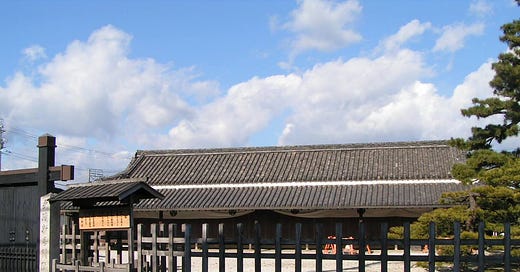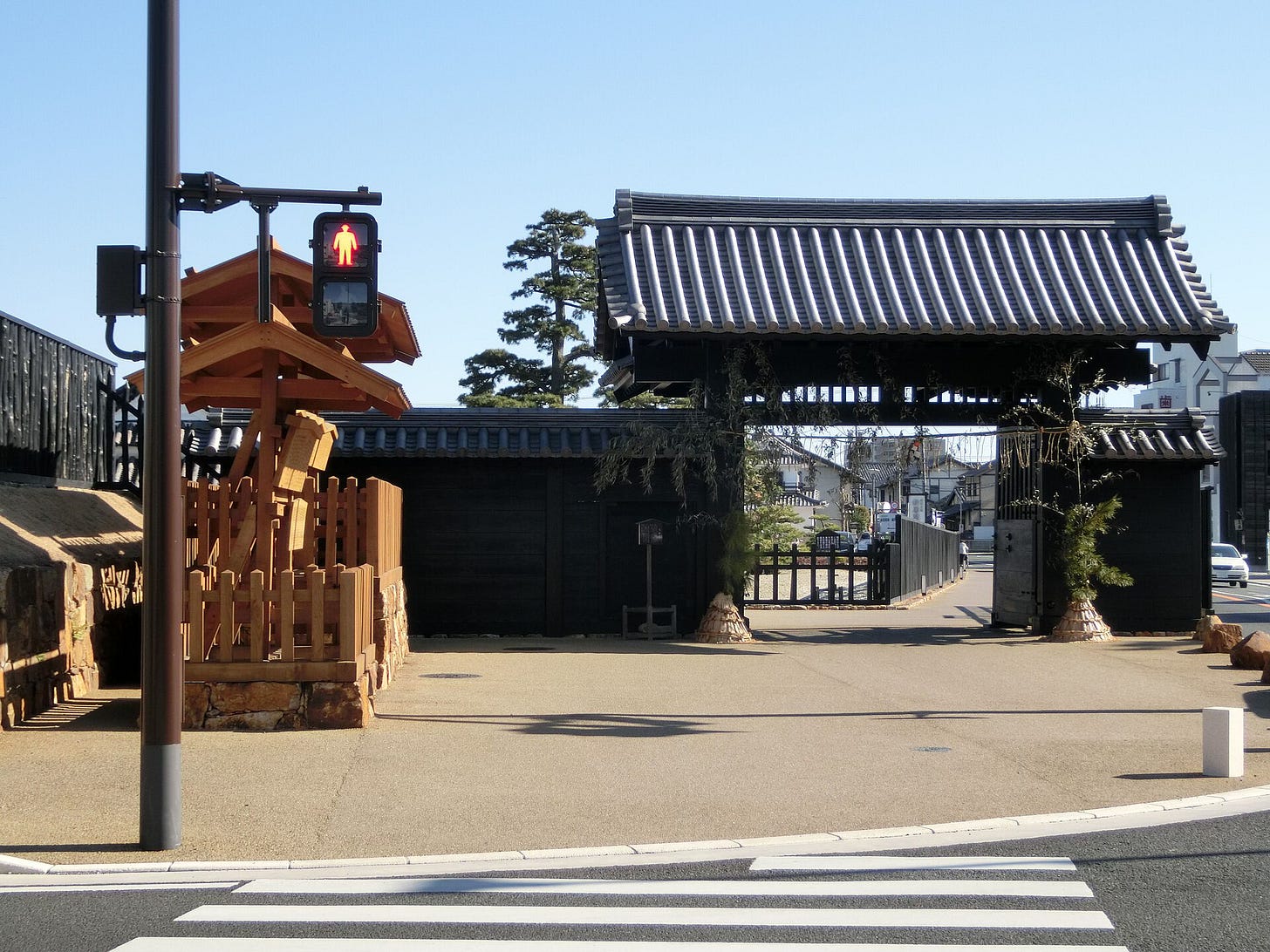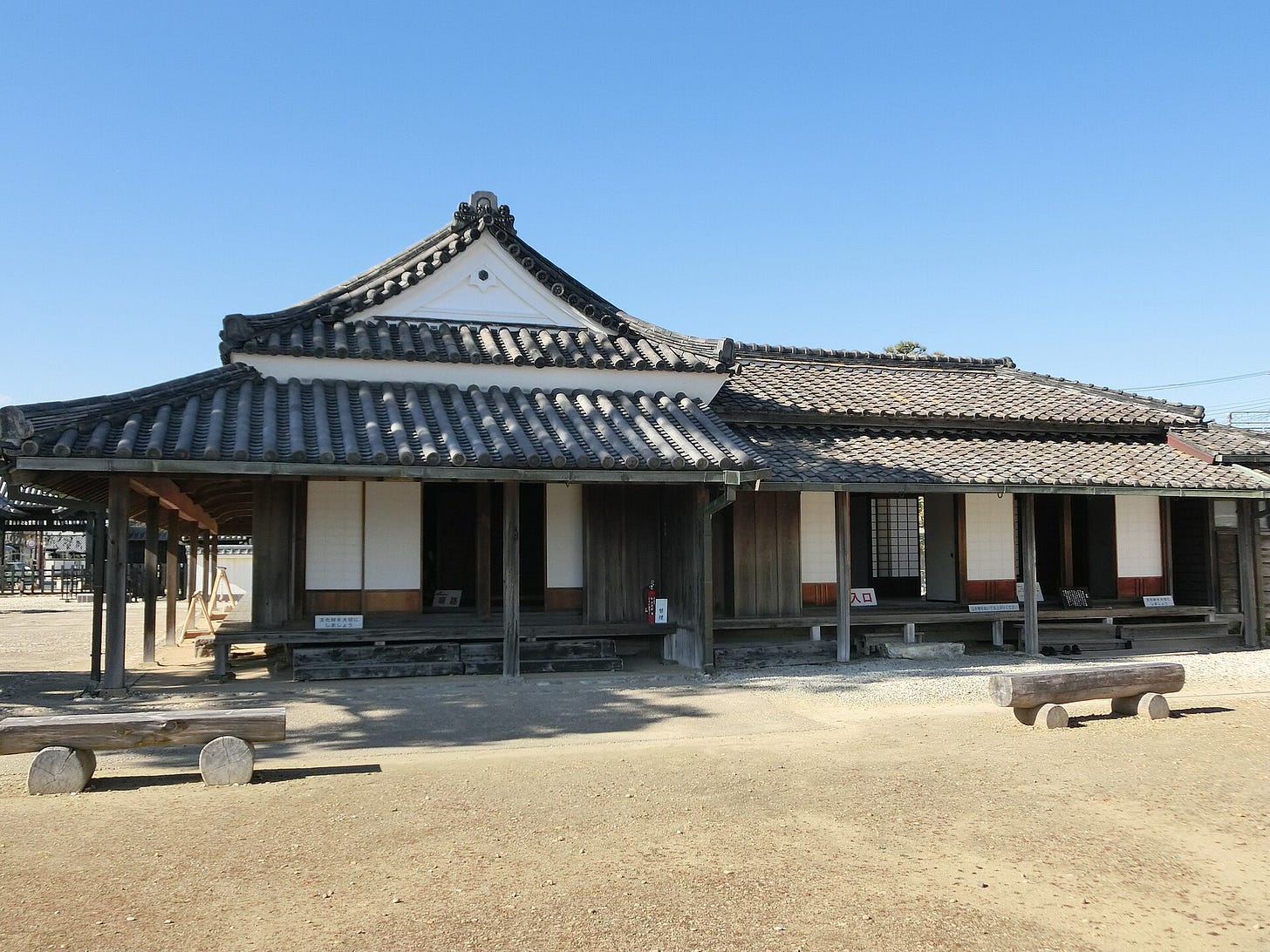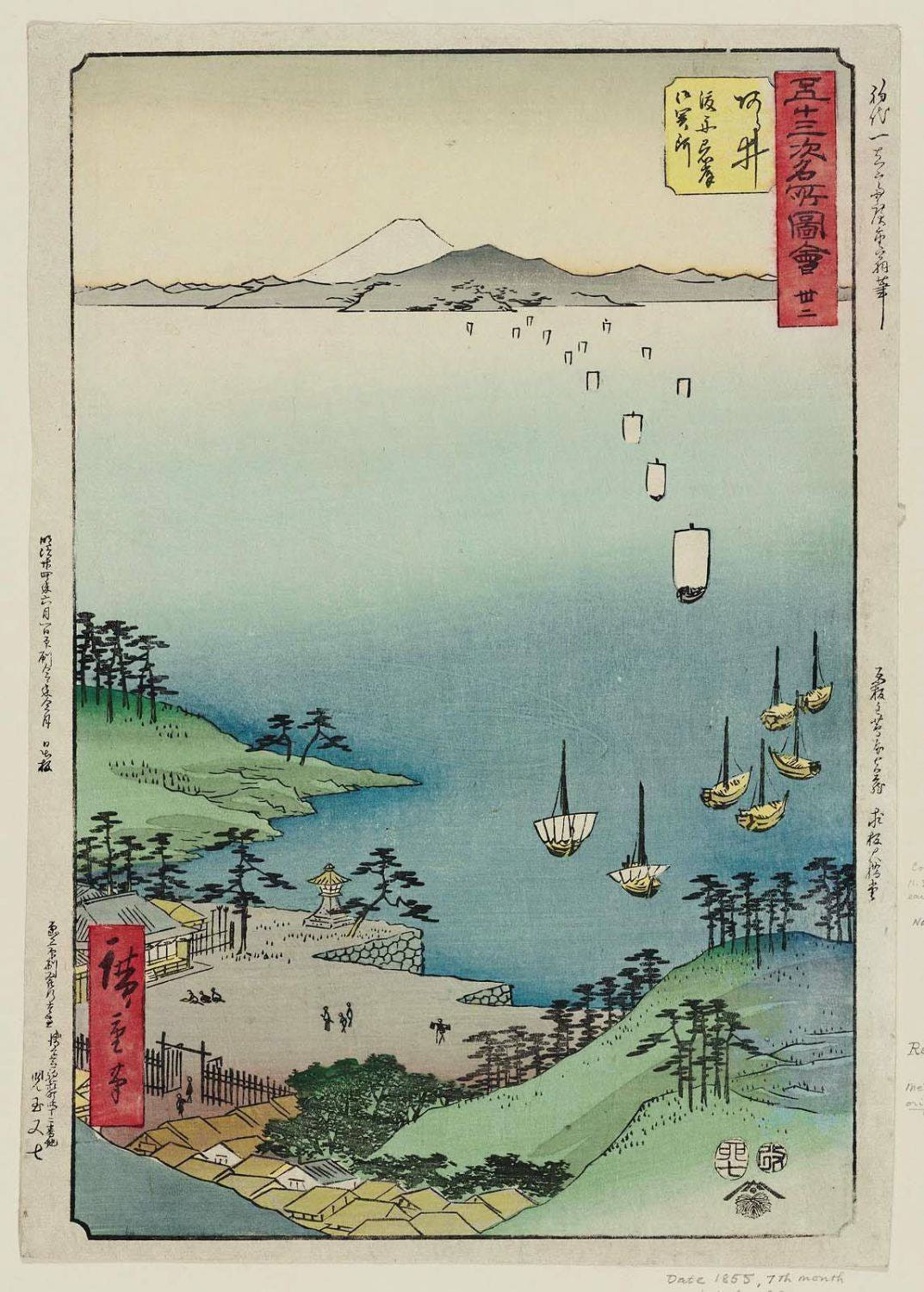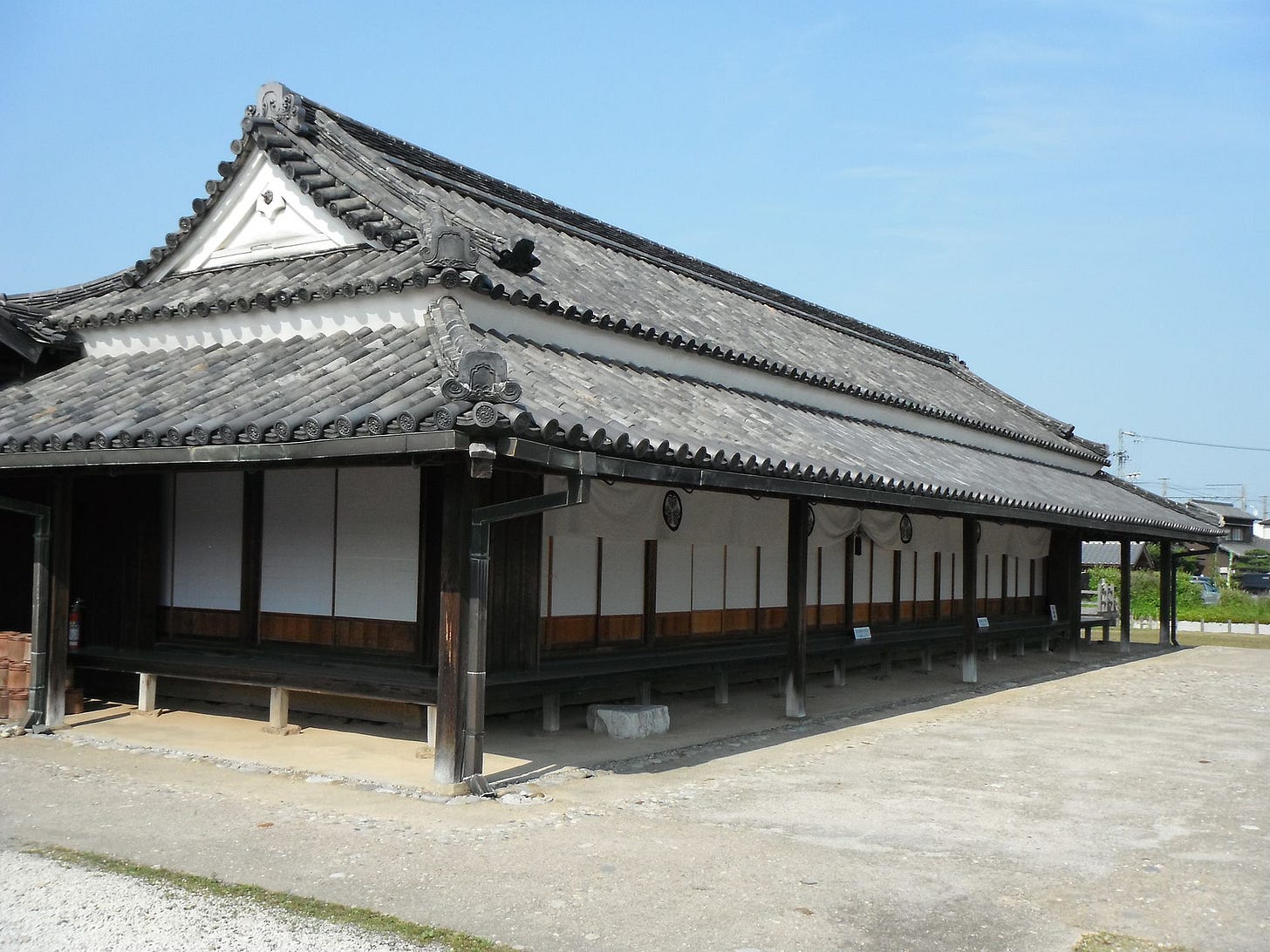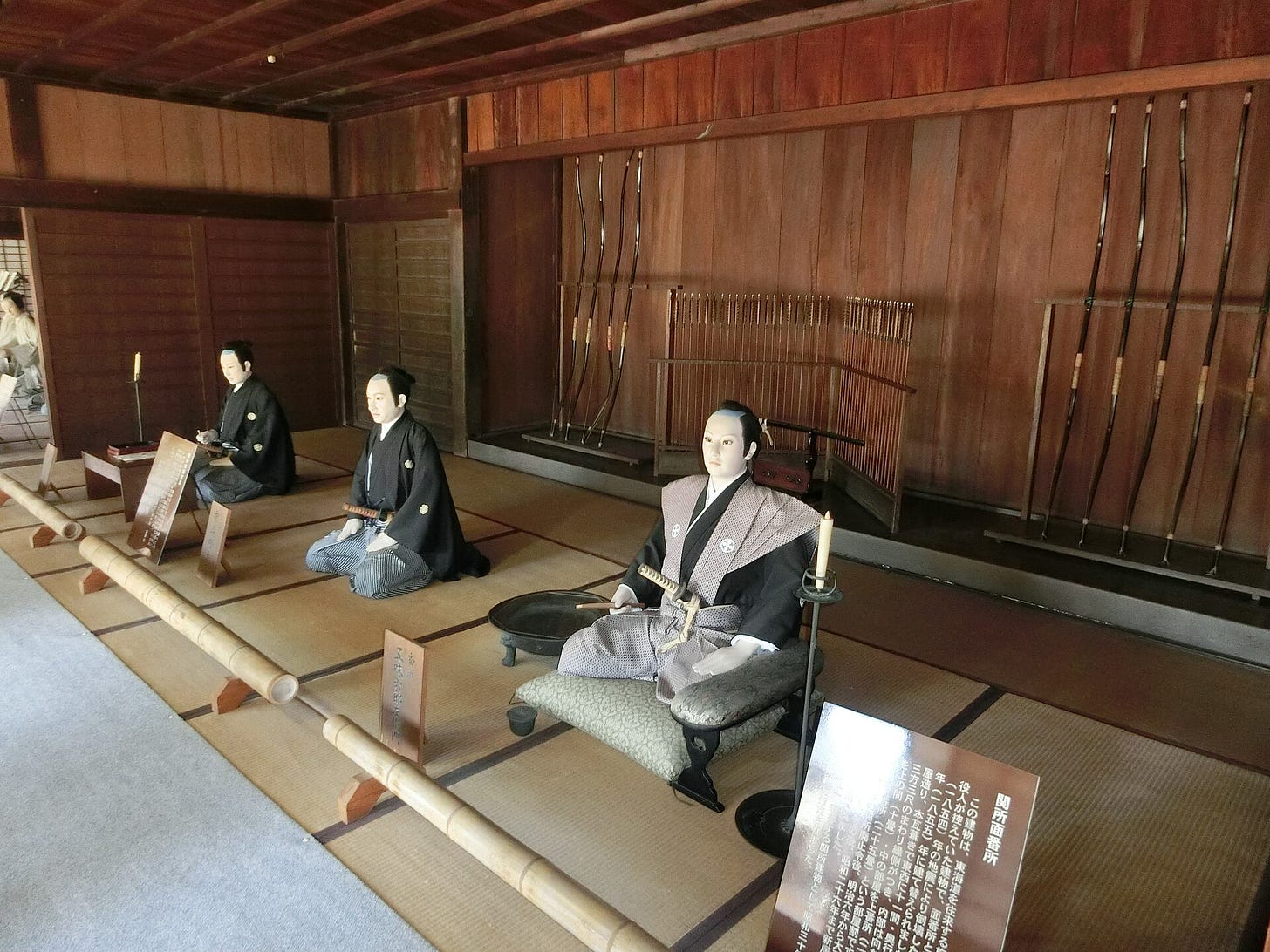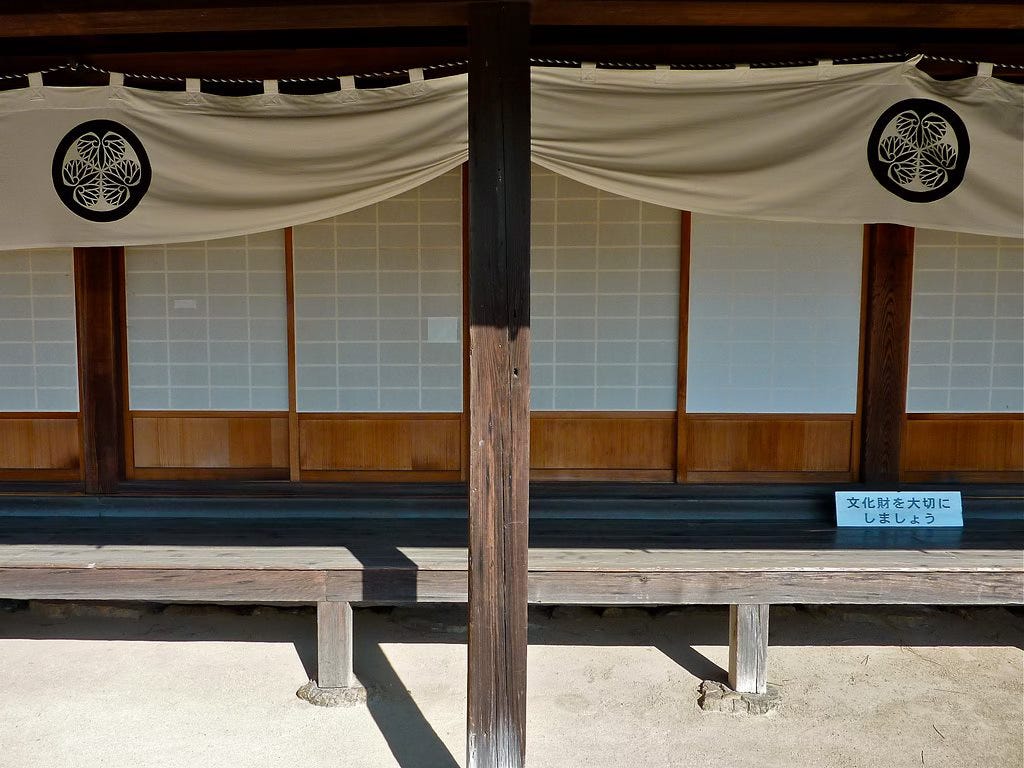The Tokaido's Arai Sekisho Checkpoint Barrier
A Rare Survivor of Multiple Quakes, Tsunami,.... and Time
The samurai manned Arai Sekisho or checkpoint barrier was one of the many security checkpoints along the vital Tokaido Highway during the Kamakura and Edo periods. Officially known as Imagire Sekisho, it was the major thoroughfare between the Shogunate in Kamakura, and later Edo, and the Imperial Capital, Kyoto.
The Tokaido, literally the Eastern Sea Route, followed Japan’s low lying Pacific Coastal regions. At one stage, it passed between the then great freshwater Lake Hamana and the sea between Hamamatsu (Shizuoka Prefecture) and Toyohashi (Aichi Prefecture) where the port city Hashimoto was located, and the Tokaido crossed. During the Kamakura period, inns were established in this area as the bottleneck formed a strategic point on the Tokaido, and in 1402, Shogun Ashikaga Yoshimitsu appointed Imagawa Yasunori as the magistrate to manage the region, including Hashimoto, Tenryu, Oi, Fujikawa, and Kisegawa towns.
On the morning of September 20, 1498, the estimated 8.6M magnitude Meio Earthquake occurred, and the Pacific Coast was struck by a massive tsunami which tore away the narrow gap between Lake Hamana and the ocean, causing the Imakiriguchi dam to collapse, and allowing seawater to flow into the lake, thus Lake Hamana became a saltwater lake. The Meio earthquake also destroyed Hashimoto, and the residents were forced to relocate to the Imakiri and Arai areas. The following year, 1499, a major storm brought heavy flooding which caused further damage to the lake mouth.
As a result, the nearly 4km Imakiri Ferry service was established to connect Maisaka and Arai to allow passage through the Imakiriguchi entrance of Lake Hamana.
To protect Edo and to maintain the peace and prevent insurrections the shogunate established 53 checkpoint barriers across the nation. Arai Checkpoint in Shizuoka’s Kosai City on the busy Tokaido route was one of the original Kamakura period barriers re-established by Tokugawa Ieyasu in 1601 and operated for over 100 years as one of the nation’s top security systems. As one of the stricter checkpoints, the barriers’ guards watched the traffic of weapons, particularly numbers of matchlock guns. Women too were checked thoroughly at the barriers and prevented from passing unless they had a passport-like tegata wooden pass, written permission from the lord of their domain, or a Roju shobun document issued by the shogunate. The wives and family of the feudal lords were required to remain in Edo as “representatives” (i.e. hostages) and were not readily allowed to travel, and so there was a careful watch for guns going in, and women coming out of Edo, which would suggest that insurrection was being planned.
Women were known to hide secret messages in their elaborate hair styles, in the folds of their kimono and other places. For that reason, women were often strip searched too. (The searches were performed by women.) As there were concerns about guns entering Edo, long chests and boxes being brought into Edo were carefully checked as well.
The rules and inspections at the Arai checkpoint were outlined in the Imakiri Onsensho Kaijidai (Imakiri checkpoint revisions) of 1667, which included 14 articles on the inspections, and the duties of the guards, inspections of nighttime passage and cargo ships. They inspected not only the Tokaido Highway but also Imakiri port. Samurai inspected all wooden chests, storage and carry boxes, and investigated the bills of women, children, wounded people, and even corpses for passage between the Kanto and Kansai regions.
Roju shobun, papers issued and signed by the Roju, the highest ranked commissioner in the Edo government, were required for the transportation of guns through customs at the barrier. At Imakiri Checkpoint, notices issued in May 1666 and in May 1712 indicated a policy of screening guns at the checkpoint, however, guns leaving Edo were not screened.
Arai checkpoint was originally built on Mukojima, further east from where it is today, but was relocated west in 1699 due to flood damage from excessively high tides.
The strategically important area around Arai was initially bakufu territory, and the checkpoint was managed by the Arai magistrate, dispatched by the Shogunate. In 1702 Kuze Shigeyuki, the lord of Mikawa Yoshida Domain (now Toyohashi City, Aichi Prefecture), was ordered to manage the checkpoint, and the direct control of the barrier transferred from the Shogunate to the lord of Yoshida Castle.
The location of the Arai checkpoint was changed again in 1707, when a major earthquake destroyed the barrier and the Pacific Coast. The Hoei earthquake of October 28, 1707, was the largest earthquake in Japan’s history, (surpassed only in 2011 by the Great Tohoku quake) and caused devastation across western Shizuoka Prefecture. The post towns of Shirasuka-shuku, Fukuroi-shuku, Kakegawa-shuku, Shimada-shuku, and Hamamatsu-shuku were destroyed by the seismic activity and tsunami. In Arai, the damage was such that 120 of the 665 houses were washed away by the three subsequent tsunami of about 3m high.
According to the records of the barrier keeper named Tominaga, "The barricade collapsed in the quake, and the tsunami was expected to come." and indeed the remains were washed away by the tsunami, and so the following year, in 1708, the barrier’s position was relocated further west to its current location. The relocation made the ferry route to Imakire even longer, and more inconvenient. Even after its relocation, the Arai Barrier continued to face the mouth of Lake Hamana and had a boat dock attached to it.
The new position was also destroyed yet again almost 150 years later in the three Great Ansei Tokai Earthquakes which occurred on December 23rd, 24th and 26th of 1854, in which the Arai checkpoint and Maisaka areas were heavily damaged. Ten nearby houses were completely destroyed, 31 were partially destroyed or damaged, and 14 people drowned. The current Arai checkpoint and existing structures were rebuilt the following year, in 1855. The current sekisho building is a single-story, east to west running, southwards facing structure with a gabled and tiled roof. The front is divided into the Kami-no-ma, Naka-no-ma, and Tsugi-no-ma rooms, and at the back were the official Goshoin-ma, Goyōdatsuba rooms, and daidokoro kitchen facilities, with three shingle roofed buildings attached as rest areas.
Arai Checkpoint was abolished by the Meiji Government’s Checkpoint Abolition Order issued on March 2, 1869, however, the building that served as its main facility, the Menbansho, continued to be used as an elementary school building between 1873 and 1917, and then as the former Arai Town Hall from 1917 until 1951, although the layout of the building was altered before being dismantled and repaired in 1971 to return it to its Edo period appearance. The Arai Barrier Museum is located next door.
The various original structures of the similarly important Hakone and Kobotoke Sekisho Checkpoints have since been lost, making this the only surviving example of a checkpoint building on a major road, and is therefore historically valuable.

